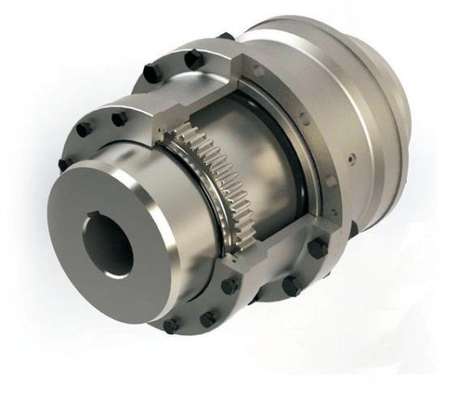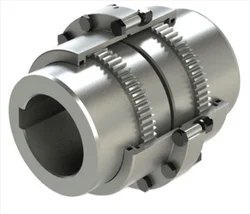Product Description
DN150 EN877 SS304 RAPID S COUPLING ROUND NUT NO TEETH
Detailed Photos
Product Description
The steel couplings conform to all the mechanical requirement of DIN EN877/BS EN877. These couplings are composed of SS304 or SS 316 stainless steel shield, clamp assembly and EPDM(An elastomeric sealing sleeve that conform to the requirement of BS EN 681-1 and it also can resist the normal domestic effluents with thermal effects up to 70°C temperature). This elastomeric material was made by well balanced formula with the combination of outstanding properties in resisting abrasion, oil, grease, chemicals, ultraviolet, heat and cold conditions. This elastomeric sleeve also provides a cushioning element in the coupling to avoid shock, vibration and ensure a noiseless drainage system.
The stainless steel was selected for the clamp and shield assemblies because it possesses high corrosion resistance characteristics.
Our EN877 stainless steel coupling and grip collar are all produced using robots and fully automatic machinery. Not only do we have high production efficiency, but the quality of our products is very stable and reliable. It has been exported to many countries, such as Europe, Southeast Asia, Russia, etc.
The standard that our products comply with:
1) DIN EN877; BS EN877;
2) EN 681-1:1996+A3:2005
The main specification and model:
| size | pcs/box | box size(cm) | kg/box | material | material | material | |||||||
| inch | mm | strip | bolt&nut | gasket | strip | bolt&nut | gasket | strip | bolt&nut | gasket | |||
| 1.5″ | DN40 | 100 | 42*32*25 | 12 | SS304 | SS304 | EPDM | SS316 | SS316 | EPDM | SS316 | SS304 | EPDM |
| 2″ | DN50 | 100 | 42*32*25 | 12 | SS304 | SS304 | EPDM | SS316 | SS316 | EPDM | SS316 | SS304 | EPDM |
| 2.5″ | DN70 | 100 | 50*37*25 | 16.5 | SS304 | SS304 | EPDM | SS316 | SS316 | EPDM | SS316 | SS304 | EPDM |
| 3″ | DN75 | 100 | 57*42*27 | 17 | SS304 | SS304 | EPDM | SS316 | SS316 | EPDM | SS316 | SS304 | EPDM |
| 4″ | DN100 | 50 | 58*39*27 | 13 | SS304 | SS304 | EPDM | SS316 | SS316 | EPDM | SS316 | SS304 | EPDM |
| 5″ | DN125 | 50 | 67*47*31 | 15.5 | SS304 | SS304 | EPDM | SS316 | SS316 | EPDM | SS316 | SS304 | EPDM |
| 6″ | DN150 | 50 | 54*38*60 | 20 | SS304 | SS304 | EPDM | SS316 | SS316 | EPDM | SS316 | SS304 | EPDM |
| 8″ | DN200 | 20 | 63*51*33 | 11 | SS304 | SS304 | EPDM | SS316 | SS316 | EPDM | SS316 | SS304 | EPDM |
| 10″ | DN250 | ||||||||||||
| 12″ | DN300 | ||||||||||||
Packaging and Delivery:
/* January 22, 2571 19:08:37 */!function(){function s(e,r){var a,o={};try{e&&e.split(“,”).forEach(function(e,t){e&&(a=e.match(/(.*?):(.*)$/))&&1

Applications of Tooth Couplings in Various Industries
Tooth couplings find widespread use in a variety of industries and applications that require efficient torque transmission and the ability to accommodate misalignment. Some common examples include:
- Industrial Machinery: Tooth couplings are frequently used in industrial machinery such as conveyors, mixers, pumps, and compressors. These applications often involve heavy loads and varying operating conditions where reliable torque transmission is essential.
- Automotive: In automotive applications, tooth couplings can be found in drivetrain systems, power transmission, and other components that require efficient torque transfer between rotating shafts.
- Marine: Tooth couplings are utilized in marine propulsion systems, where they help transmit torque from engines to propellers, ensuring smooth and reliable operation of vessels.
- Energy Generation: Power plants, including those for electricity generation and renewable energy sources, use tooth couplings in various equipment like turbines and generators to transfer rotational energy.
- Material Handling: Tooth couplings play a role in material handling equipment such as cranes, hoists, and elevators, where they assist in moving and lifting heavy loads.
- Mining and Construction: Industries like mining and construction rely on tooth couplings for equipment such as excavators, loaders, and crushers, which require robust torque transmission capabilities.
These examples illustrate the versatility of tooth couplings across different sectors where dependable torque transmission and misalignment compensation are vital for operational efficiency and reliability.

Identifying Wear or Damage in Tooth Couplings
Wear or damage in a tooth coupling can lead to performance issues and potential failures. Here are some signs to watch for and methods to identify problems:
- Abnormal Noise: Unusual noise during operation, such as rattling, grinding, or clicking, can indicate misalignment or wear in the teeth.
- Increased Vibration: Excessive vibration may suggest misalignment, worn teeth, or other issues affecting coupling performance.
- Temperature Rise: If the coupling becomes unusually hot during operation, it could indicate friction due to misalignment or damaged teeth.
- Visual Inspection: Regularly inspect the coupling for signs of wear, corrosion, pitting, or chipped teeth. Use proper lighting and magnification if needed.
- Measurement: Check tooth clearances using specialized measurement tools to identify any significant deviations from specifications.
- Runout Measurement: Measure coupling runout to detect eccentricity or misalignment that could lead to premature wear.
- Alignment Check: Use laser alignment tools to ensure proper shaft alignment, preventing undue stress on the coupling teeth.
- Lubrication Analysis: Analyze the lubricant for metal particles or signs of contamination, which could result from wear and damage.
Regular inspection, monitoring operating conditions, and addressing any signs of wear or damage promptly can help extend the life of the tooth coupling and prevent unexpected failures.

Factors for Selecting a Tooth Coupling
When choosing a tooth coupling for a specific application, consider the following factors:
- Load and Torque: Determine the maximum load and torque requirements of the application to ensure the coupling can handle the expected forces.
- Speed: Consider the rotational speed of the equipment as higher speeds may require specialized couplings with enhanced balance and accuracy.
- Alignment Tolerance: Evaluate the degree of misalignment the coupling can accommodate without affecting performance.
- Environment: Assess the operating environment, including temperature, humidity, and exposure to contaminants or corrosive substances.
- Size and Space: Choose a coupling size that fits within the available space and meets the connection requirements of the shafts.
- Backlash: Determine the acceptable level of backlash, as some applications may require minimal or zero backlash for precise motion.
- Shock and Vibration: Consider whether the application involves frequent shocks or vibrations and choose a coupling that can dampen these effects.
- Material: Select the appropriate coupling material based on factors like corrosion resistance, strength, and compatibility with the connected components.
- Maintenance: Evaluate the ease of maintenance, including access to lubrication points and the need for periodic inspection and replacement.
- Cost: Balance the performance requirements with the budget constraints of the project.
Considering these factors will help you choose the right tooth coupling for your specific application, ensuring optimal performance and reliability.


editor by CX 2024-04-13
by
Tags:
Leave a Reply